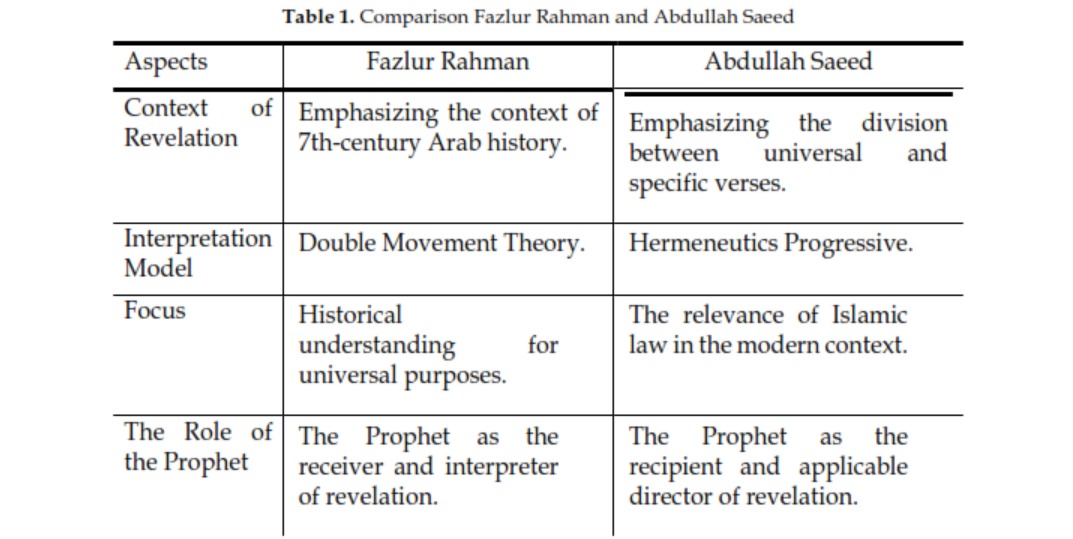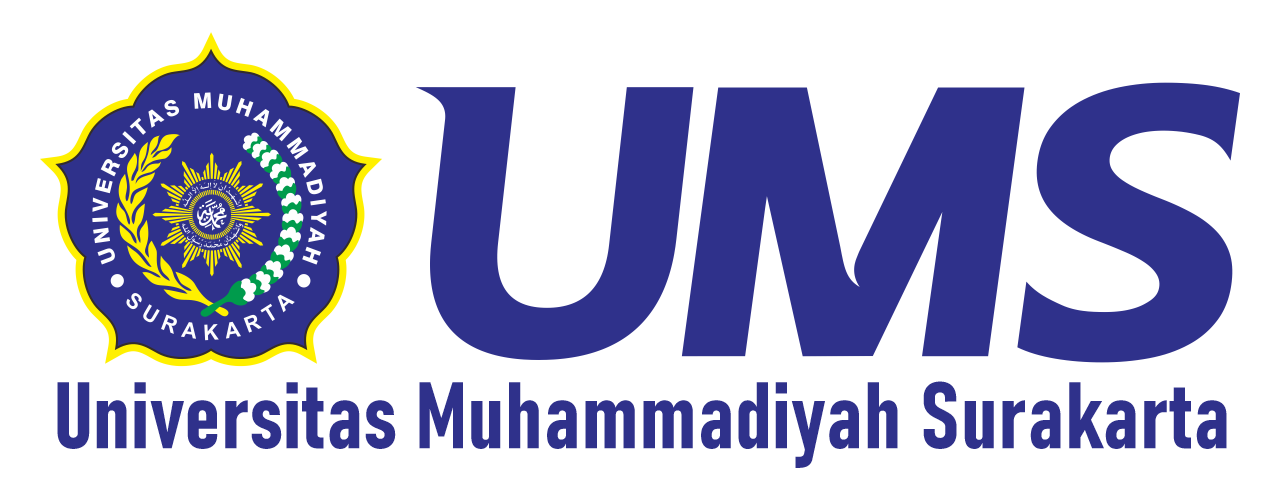The Qur'an as a Treatise on Revelation: A Hermeneutical Analysis of the Concept of Revelation by Fazlur Rahman and Abdullah Saeed
Keywords:
Reveleation, Wahy, Hermeneutics, Fazlur Rahman, Abdullah SaeedAbstract
The revelations of Allah other than the Qur'an are also revealed through ideas. The Qur'an is the only revelation that has truly been revealed by Allah with its pronunciation and meaning. Some scholars interpret revelation as inspiration that only brings meaning without words. Not a few orientalists have examined the psychology of Muhammad, whether he was a healthy person or a sick person, because his recognition as a prophet is considered impossible. Seeing the Qur'an as derived from the previous scriptures and rejecting the prophethood of Muhammad as a trans-historical event, for them the prophethood of Muhammad is an imitation. Fazlur Rahman distinguishes the unique nature of the Qur'anic revelation from other forms of creative knowledge and places the Qur'an at the very top with regard to the essence of divinity and the inspiration of ideas. In Saeed's perspective, in interpreting the ethical-legal verses, one must take into account social changes in order to sustain the close relationship between the Qur'an and Muslims today.
Downloads
References
[1] F. Rahman, Major Themes of the Qur’ān. Chicago: University of Chicago Press, 2009.
[2] A. Saeed, Interpreting Quran. New York: Routledge, 2006.
[3] A. Saeed, Reading the Qur’an in the Twenty-First Century: A Contextual Approach. New York: Routledge, 2014. doi: https://doi.org/10.4324/9781315870922.
[4] F. Rahman, Islam, Second. Chicago: The University of Chicago Press, 2002.
[5] S. Mujahid, K. F. Simamora, and R. A. Hasibuan, “Pergeseran Makna Wahyu; Analisis Konsep Pewahyuan menurut Abdullah Saeed,” AL FAWATIH J. Kaji. al-Qur’an dan Hadis, vol. 5, no. 1, pp. 110–122, 2024.
[6] A. Asroni, “Penafsiran Kontekstual Al-Qur’an: Telaah Atas Pemikiran Abdullah Saeed,” Living Islam J. Islam. Discourses, vol. 4, no. 1, 2021, doi: https://doi.org/10.14421/lijid.v4i1.2782.
[7] A. Salida, D. Masri, M. Alfiansyah, and W. S. Hasibuan, “Teori Kontemporer Fazlur Rahman mengenai Wahyu Al-Qur’an Hadir dalam Terma-Terma,” vol. 12, no. 1, pp. 9–20, 2024.
[8] S. A. Alnajashi, M. A. A. Al Qasem, K. A. A. Al-Mishaal, and W. A. E. Aluthman, “The Impact of Attending Qur’an Memorization Programs on Psychological Wellbeing: A Study on Adult Females,” Islam. Guid. Couns. J., vol. 8, no. 2, 2025, doi: https://doi.org/10.25217/0020258594900.
[9] N. R. Y. Wijaya and A. Rudi, “Perihal Pewahyuan Kepada Para Nabi dan Para Rasul Menurut Fazlur Rahman,” Kariman, vol. 9, no. 1, pp. 115–142, 2021.
[10] A. Nirwana AN, F. Arfan, F. Dolles Marshal, C. Maulana, and N. Fadli, “Methods of Qur’an Research and Quran Tafseer Research its implications for contemporary Islamic thought,” Bull. Islam. Res., vol. 2, no. 1, pp. 33–42, Jun. 2024, doi: https://doi.org/10.69526/bir.v2i1.34.
[11] A. N. AN, “Metode Riset Al-Qur’an dan Tafsir,” in Metode Riset Al-Qur’an dan Tafsir, 1st ed., M. Muthoifin, Ed., Surakarta: Muhammadiyah University Press, 2025, pp. 1–485. [Online]. Available: https://mup.ums.ac.id/shop/agama/metode-riset-al-quran-dan-tafsir/
[12] T. Coronella and S. A. Aiken-Wisniewski, “USING QUALITATIVE METHODS,” in Scholarly Inquiry in Academic Advising, Second Edition, Ira A. Fulton Schools of Engineering, Arizona State University, United States: Taylor and Francis, 2023, pp. 128–145. doi: https://doi.org/10.4324/9781003446903-11.
[13] A. Muir, “Digital library research,” in Handbook of Information Management, 8th Edition, Information Science, Loughborough University, United Kingdom: Taylor and Francis, 2003, pp. 518–532. doi: https://doi.org/10.4324/9780203403914-31.
[14] I. Ali Fauzi, “Mempertimbangkan Neo-Modernisme,” Islam. J. Dialog Pemikir. Islam, no. 2, 1995.
[15] A. A’la, Dari Neomodernisme ke Islam Liberal: Jejak Fazlur Rahman dalam Wacana Islam Indonesia. Jakarta: Yayasan Wakaf Paramadina, 2003.
[16] A. Saeed, Islamic Thought: An Introduction. New York: Routledge, 2006.
[17] M. F. ’Abd Al Baqi, Al Mu’jam Al Mufahras Li Alfazh Al Quran Al Karim. Kairo: Dar Al Kutub Al Mishriyyah.
[18] N. H. Abu Zayd, Mafhūm al-Naṣṣ: Dirāsah fī ʿUlūm al-Qur’ān. Beirut: al-Markaz al-Taqāfī al-ʿArabī, 2002.
[19] M. D. Rahardjo, Ensiklopedi Al-Qur’an Tafsir Sosial Berdasarkan Konsep-Konsep Kunci. Jakarta: Paramadina, 2002.
[20] M. Q. Shihab, Al-Mausū’ah al-Qur’āniyah Dirāsah al-Alfāẓ; Ensiklopedia Al-Qur’an Kajian Kosa Kata Jilid III. Jakarta: Lentera Hati, 2007.
[21] A. al-Q. ‘Abdur-R. bin ‘Abdillāh bin Aḥmad as-Suhailī, al-Rauḍ al-Unuf. Beirut: Dar al-Fikr, 1994.
[22] K. Mudhiah, “Konsep Wahyu Al-Qur’an dalam Perspektif Nasr Hamid Abu Zaid,” Hermeneutik, vol. 9, no. 1, 2015.
[23] T. Ramadan, Islam and the Arab Awakening. Oxford: Oxford University Press, 2012.
[24] A. Rippin, Muslims: Their Religious Beliefs and Practices. London: Routledge, 2005.
[25] F. Rahman, Revival and Reform in Islam: A Study of Islamic Fundamentalism. Oxford: Oneworld, 2000.
[26] Raden Ayu Halima, “Bibliometric Analysis of Quran Recitation Development in Scopus International Database Publications 1974-2024,” Bull. Islam. Res., vol. 3, no. 3, pp. 513–526, May 2025, doi: https://doi.org/10.69526/bir.v3i3.369.
[27] A. Al Kausar, “The Qur’an for All: A Historical Analysis of Bengali Translations and Tafsir,” QiST J. Quran Tafseer Stud., vol. 4, no. 1, pp. 125–138, Jan. 2025, doi: https://doi.org/10.23917/qist.v4i1.7389.
[28] R. Rochmad, A. Nasution, D. R. A. Anggara, M. Rifaannudin, and M. A. H. A. Almaarif, “Water in the Parables of Worldly Life in the Qur’an: A Semantic and Scientific Study,” QiST J. Quran Tafseer Stud., vol. 4, no. 1, pp. 267–286, May 2025, doi: https://doi.org/10.23917/qist.v4i1.9053.
[29] A. N. Hanifah, B. Al Sowaidi, and A. Nirwana AN, “Reinterpretation of the Words Falyanzur and Tha’am in Qs ’Abasa Verse 24 to Build Public Nutrition Awareness,” QiST J. Quran Tafseer Stud., vol. 4, no. 1, pp. 109–124, Jan. 2025, doi: https://doi.org/10.23917/qist.v4i1.7321.
[30] F. Rahman, Islam & Modernity: Transformation of an Intellectual Tradition. Chicago & London: The University of Chicago Press, 1982.
[31] S. Sahiron, Hermeneutika dan Pengembangan Ulumul Qur’an. Yogyakarta: Pesantren Nawasea Press, 2017.
[32] A. Wijaya, “Mendiskuruskan Kembali Konsep Kenabian,” J. Pemikir. Islam At-Tahir, vol. 5, no. 2, 2005.
[33] A. Saeed, The Qur’an: An Introduction. New York: Routledge, 2008. doi: 10.4324/9780203938454.
[34] B. Buddharakkhita, Caring for Our Planet: Buddhism and the Environment. Kandy, Sri Lanka: Sri Lanka International Buddhist Academy, 2014.
[35] J. Assagaf, “Studi Hadis Dengan Pendekatan Sosiologi: Paradigma Living-Hadis,” Holist. al-Hadis, vol. 1, no. 2, pp. 289–316, 2015.
[36] A. Neuwirth, Scripture, Poetry and the Making of a Community: Reading the Qur’an as a Literary Text. Oxford: Oxford University Press, 2014. doi: https://doi.org/10.1093/acprof:oso/9780198785105.001.0001.
[37] J. van Ess, The Flowering of Muslim Theology. Cambridge: Harvard University Press, 2006.
[38] I. Mattson, The Story of the Qur’an: Its History and Place in Muslim Life. Oxford: Blackwell Publishing, 2008.
[39] B. B. Lawrence, The Qur’an: A Biography. London: Atlantic Books, 2006.
[40] J. D. McAuliffe, Ed., The Cambridge Companion to the Qur’ān. Cambridge: Cambridge University Press, 2006. doi: https://doi.org/10.1017/CCOL0521831607

Downloads
Submitted
Accepted
Published
How to Cite
Issue
Section
License
Copyright (c) 2025 Muhammad Naufal Ashshiddieqi, Muhammad Rofi Elwafa

This work is licensed under a Creative Commons Attribution 4.0 International License.







